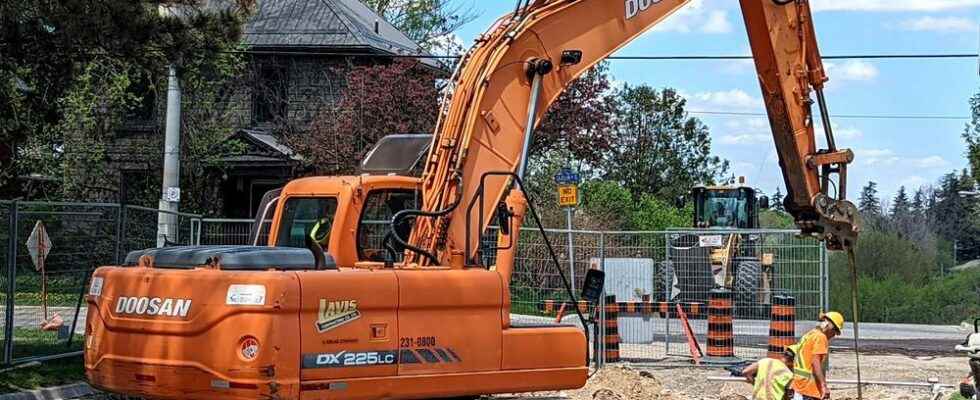Targeted inspections of the St. Marys sewer system following the collapse of a pipe underneath Huron Street earlier this year have revealed two other areas of concern.
An 85-metre section of pipe on Robinson Street near Queen Street West “is in an advanced state of deterioration,” environmental services manager Dave Blake recently wrote in a report to town councilors. About 450 meters of pipe under Elizabeth Street between James Street and Huron Street, while not as severely damaged, will also require rehabilitation, Blake said.
The plan on Robinson Street is to ask experts to determine whether the pipe can be reinforced with a structural lining. If the answer is ‘no,’ Blake has asked town hall to commission engineering plans for excavation and replacement, a $50,000 request councilors approved in advance at a meeting July 26.
Tea estimated cost of replacing the pipe under Robinson Street is between $200,000 and $500,000, Blake said. He’s “hopeful” that by the end of August the town will know more about whether that will be necessary.
The pipe under Elizabeth Street, meanwhile, is in better shape. Staff believe it will be a candidate for the structural lining, a fix that’s “much less invasive” and something the public works department “can plan accordingly for,” Blake said.
The latest update on sewer woes in St. Marys comes as crews prepare to wrap up emergency repairs on Huron Street this week.
Three city blocks of sanitary sewer and two blocks of watermain needed to be replaced after the unexpected collapse of a 50-year-old asbestos-cement pipe in April caused blockages.
The rehabilitation project – expected to cost about $1.2 million, according to council documents – has delayed major roadwork on Wellington Street and limited access to residential driveways in the area over the past several weeks.
Asbestos-cement pipes have been phased out in favor of PVC in recent years, but the ones in St. Marys – installed in the early seventies along with the water pollution control plant on Thomas Street – are only halfway through their expected lifespan.
Public works staff and other experts were initially stumped by the system’s deterioration but after talks with officials who experienced a similar situation in Stratford, it appears the culprit is hydrogen sulphide gas released from sewage. Because much of the damage in St. Marys is downstream from sanitary pumping stations that hold sewage for a longer period of time, Blake told councilors this month “the working theory” is that’s the part of the system responsible for the town’s recent problems.
Besides Robinson Street and Elizabeth Street, three other sections of the St. Marys sewer system were inspected following the pipe collapse.
Blake said it’s still too early to say if the unexpected costs of the sewer repairs will impact wastewater rates in St. Marys.
“It’s something that we’ll be assessing here as part of our annual rate review and how that expense this year impacted the budget and the overall financial assessment of the system,” he said. “We’re hoping that it doesn’t have much of an impact at all.”
